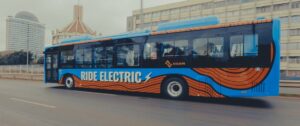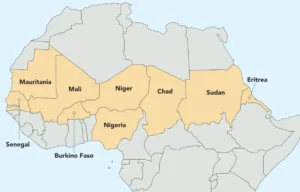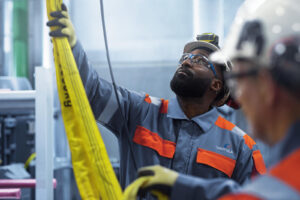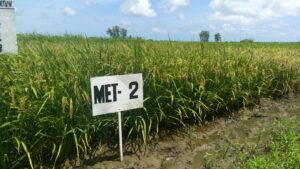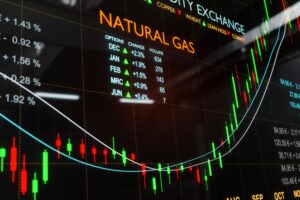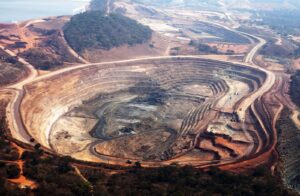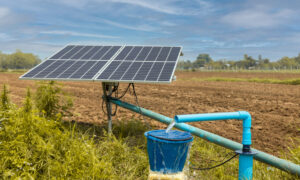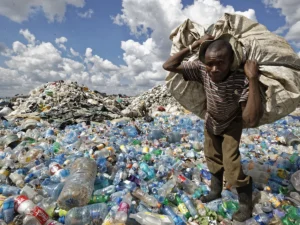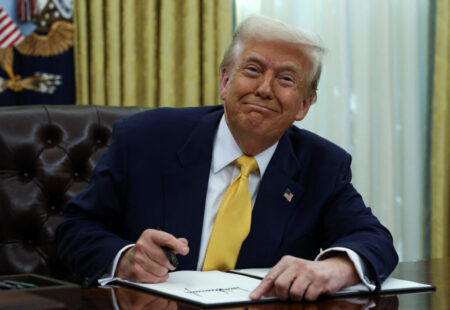- ‘Perfect storm’ in South Sudan demands urgent action – UN
- Kenya’s green gold rush that clean energy investors can’t ignore
- Mining diplomacy: Will the US exploit DRC’s critical minerals?
- Zoned for impact: How a cross-border Special Economic Zone is powering Africa’s green switch
- AIM Congress 2025: UAE’s tolerance conference aims to fix a fractured world
- AfDB’s $10Bn lifeline: Can smallholder farmers finally escape poverty?
- Juba on edge: Is South Sudan the next failed state?
- Kakuzi PLC slips into the red after Red Sea crisis, forex losses
Opinion
- Africa will eventually rely primarily on renewable energy, as much of the rest of the world strives to — but on its own timetable.
- To achieve a carbon neutral future, African nations must have the underlying infrastructure and industry to make the dominance of renewables possible.
- But as things currently stand, most African states lack said infrastructure and industry.
There’s a promising future for African renewables as the continent strives to balance its current reliance on fossil fuels. That’s the prediction of the African Energy Chamber’s 2025 Outlook Report on the State of African Energy.
As I have said before, Africa will eventually rely primarily on renewable energy, as much of the rest of the world strives to — but on its own timetable, not that of Western countries who have benefited for centuries from the exploitation of fossil fuels.
To achieve a carbon neutral future, African nations must have …
- Beyond physical infrastructure, Africa’s integration requires modern software upgrades: the systems, policies, and institutional frameworks that power trade across borders.
- By positioning economic transformation at the heart of our integration agenda, Africa can advance up the value chain to generate wealth.
- By effectively mobilizing our own resources first, driving economic transformation, and building both the required software and hardware, we can successfully integrate Africa.
Ask any traveler about their experience moving across parts of Africa, and you will likely hear about familiar challenges: high costs, indirect routes, and unpredictable schedules that can make even the simplest journeys more complicated and costly. These travel hurdles highlight the immense opportunity to further strengthen Africa’s integration and unlock seamless connectivity across the continent.
The potential is undeniable. According to the World Bank, the African Continental Free Trade Area (AfCFTA) stands to be the world’s largest free trade zone, encompassing 1.4 billion people and …
- Since 1960, more than $2.6 trillion has been pumped into Africa in the form of aid.
- From 1970 and 1998, when aid was at its peak, poverty actually rose alarmingly—from 11% to 66%—due in large part to this massive influx of foreign aid that counteracted its intended good.
- Aid decreased long-term economic growth by fuelling systemic corruption, in which powerful aid recipients funnelled foreign funds into a personal stash instead of public investment.
After President Trump announced a 90-day overseas spending freeze, Secretary of State Marco Rubio said “every dollar” must be “justified” by evidence that it makes the US safer, stronger and more prosperous. I acknowledge that stance may sound ungrateful. At first blush, many might counter that starving people have no agenda. Destitute parents still need to feed their children. Turning a blind eye to their plight is inhumane.
Let me explain why the African Energy Chamber (AEC) …
- In Africa, just like elsewhere, energy-intensive businesses are under great pressure to decrease CO2 emissions.
- Wärtsilä Energy knows more about this than most: many of our mining and industrial partners in Africa operate their microgrids, either from choice or necessity.
- While wind and solar power can offer emission-free energy at lower costs than fossil fuels, their intermittent nature adds uncertainty to the system.
In African countries, particularly those with a well-developed industrial sector, a significant portion of energy production may come from the industry’s own power plants.
This is especially true in countries with low grid reliability, and industries rely on self-generated power to ensure a stable energy supply.
In this article, we offer insights into Wärtsilä Energy’s approach to supporting energy-intensive industries to optimise the use of renewable energy and reach their decarbonisation objectives.
In Africa, just like elsewhere, energy-intensive businesses are under great pressure to decrease CO2 emissions …
- Food security is increasingly under threat as extreme weather events, shifting agro-ecological zones and changes in rainfall patterns accelerate the risk of food insecurity.
- In response to the challenges posed by climate change, various adaptation measures have been identified and implemented.
- These aim to improve livelihoods and enhance food security while mitigating the impact of climate change.
Climate change is an undeniable reality, and its consequences have far-reaching effects on various sectors, particularly agriculture and food security. RSK Tanzania Senior Social Consultant Geofrey Mutayoba says developing countries are particularly vulnerable to the impacts of climate change, as their economies heavily rely on agriculture. However, innovative adaptation measures are being introduced that are yielding benefits that go beyond climate resilience.
Food security is increasingly under threat as extreme weather events, shifting agro-ecological zones and changes in rainfall patterns accelerate the risk of food insecurity. Developing countries face significant challenges in providing …
- AI allows photographers to transform their photos with just a few adjustments, enhancing colours, recovering details, and creating vibrant images that truly capture the magic of the moment.
- AI-powered editing tools excel in removing unwanted elements, sharpening details, and reducing image noise, making them invaluable aids in producing impeccable photographs.
From the emergence of text-based diffusion models that can bring images to life with just a description, to the remarkable capabilities of advanced artificial intelligence (AI) image generators, the boundaries of what we can achieve in photography are expanding like never before.
Just few years ago, a professional photographer would spend more time on the photo editing process than on the photoshoot itself. Hours and hours were spent behind a computer, ensuring that each image reflected the essence of what the photographer intended. The colours, the focus, the details – all these elements took time to perfect.
AI-powered photography editing
…- Africa’s natural gas sector stands poised to prepare the entire continent for eventual decarbonization, as do many of the companies operating here.
- Energy companies are describing policies that call for pursuing energy transition measures for tomorrow while providing the natural gas to power the world today.
- Africa continues to hold immense natural gas potential and is positioned to not only increase its outputs but also capitalize on the underserved LNG market and meet Europe’s ongoing demand.
The recently signed liquefied natural gas (LNG) development project in South Africa’s Mpumalanga province is a promising step on the long road to Africa’s just energy transition.
The project, being jointly developed by Kinetic Energy of Australia and the Industrial Corporation of South Africa (IDC), a national development finance institution, will capitalize on Kinetic Energy’s recent 3.1 billion cubic feet natural gas discovery in Amersfoort, Mpumalanga. The project is expected to produce 50 megawatts …
- The final agreement of the Dubai climate summit mentions for the first time a transition “away from fossil fuels.”
- This is certainly a step on the right path, but that remains far too insufficient to respond to the urgency and severity of the climate crisis, particularly for vulnerable countries.
- For millions of Africans, the climate crisis affects every aspect of life, from food and housing to access to clean water and clean energy.
World leaders have finally reached an agreement that the world must abandon fossil fuels to prevent catastrophic climate change, following 30 years of intense and painful negotiations.
This concession was achieved in response to the outcry caused by the previous draft, which did not explicitly acknowledge the necessity of transitioning away from fossil fuels.
Although some hail the Global Stocktake as ‘historic,’ it does not clearly signal an “exit” from oil, gas, and coal, as the …
- Africa holds more than half of the world’s reserves of cobalt, 46% of its manganese, and 21% of its graphite, all used in EV batteries, and about a quarter of its bauxite, which is required for solar photovoltaic technologies.
- For decades, Africa has allowed her raw materials, including oil and natural gas, to be exported raw, without a chance to benefit from the finished product.
- As a result, we’ve missed out on the job creation, industrialization, and economic diversification.
To meet their green agendas, the European Union, US, and China are engaged in the modern-day equivalent of a gold rush. This time, though, fortune seekers aren’t panning for shiny nuggets in Canada, America, or Australia. Instead, all eyes are on the critical minerals of Africa—cobalt, graphite, lithium, and others—raw materials essential to the production of clean technology, including electric vehicles (EV).
To say that Africa is generously endowed in this …

